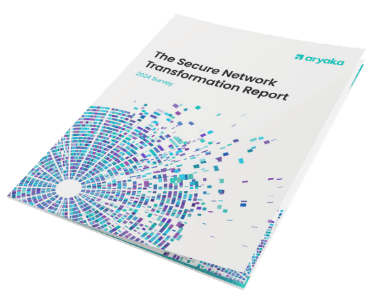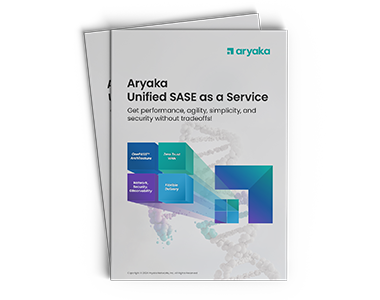SD-WAN Architectures: How Do You Bake Your Cake?

There is something about the smell of a freshly baked cake that is hard to be unhappy with. Not every scent is as welcoming. The tranquilizing effect of sitting down to a slice of still-warm cake with a cup of hot, milky tea, plus the loveliness of the entire ritual is nothing short of therapy.
But why are we discussing cakes, when we should be talking about WAN architectures and software-defined networking? As it turns out, there are a lot more similarities between baking a cake and architecting an SD-WAN solution, than we think.
There is one for every occasion
Ask the cake connoisseurs and they will tell you how the one meant for a wedding is different than the one for a birthday. There is a unique one for just about every occasion.
Similarly, the SD-WAN marketplace is booming and full of options. What started as a simple stand-off between the overlay and fully managed SD-WAN, has now branched into a full-fledged software-defined laboratory.
While some go for the full-proof PoP based architecture to optimize the middle-mile and connect all the remote locations and cloud applications, there is another breed of vendors that rely on public cloud-based overlay architecture to tend to more specific use cases. Then there is the SD-Core solution that’s trying to charge up the middle-mile by acting as a complementary add-on to half-baked SD-WAN architectures. You get the point, right?
Easy to bake one…easier to get it wrong
When it comes to cakes, it is always safer to order one from the expert bakers, than to take a leap of faith and bake one. There is plenty that could go wrong. Your dish can dry out, toughen or maybe crumble.
While you can still afford to make mistakes in the kitchen, the same cannot be said about your WAN services and network architecture. Most SD-WAN architectures ride either on — MPLS or/and the public internet. The former was never built for cloud applications such as Office 365 and offers no real optimization, and the latter comes as a package deal with insufficiency and unpredictability.
That’s precisely why, during global deployments, service providers seldom guarantee SLAs beyond their administrative domain, rendering the expectation of superior MPLS QoS performance questionable. The disaster-proof recipe for your SD-WAN solution should involve a global L2 core network architecture with complete control of the latency, jitter and packet loss at a worldwide scale.
The right recipe
Cakes are a mystical amalgamation of flour, milk, eggs, butter, and all the good stuff that needs to be mixed in the right proportion for the magic to happen. Miss one and you’re far from the authentic flavor. SD-WAN architectures are not much different.
Most SD-WAN technology places edge boxes in branch offices, and ties them up with an overlay that rides over WAN connections. They tend to miss the secret sauce that really makes a difference. We are pointing to stuff such as optimization techniques, direct connectivity to SaaS, PaaS and IaaS providers, last-mile procurement, link management, deployment flexibility, centralized management and a robust after sale support.
Everyone wants a bite
From businesses crossing borders and rise of cloud applications to the more recent and unprecedented events such as COVID-19, that’s pushing employees to use bandwidth intensive application to work from home — SD-WAN is no more a matter of if but when.
Per our recent research, weeks within the knowledge workers begin working from home, Video traffic into China shot up by a factor of 3 times the normal rate. While enterprises are bracing to make this cultural shift, the vendors are lining up to make the most of this transition, lapping up every opportunity that comes their way.
From Start-ups, telcos, and edge-router providers, everyone wants a bite of the pie and has a different take on the basic idea. On-premise, cloud-enabled, DIY, WAN optimization boxes, application fiber, and what have you.
As the market continues to march towards the $2.2 billion mark in 2022, it is also witnessing a sort of saturation and consolidation — or so say the analysts.
Thoughts fresh out of the oven
There are a lot of factors that you cannot control while taking a leap into a lesser known territory. What you can do though, is make your SD-WAN transition easier than baking a cake.
How?? Pick up the phone and call us.
For further reading, check out this whitepaper on Aryaka Service POP Network Architecture, that deciphers the key design principles that govern Aryaka’s Global Core Network infrastructure to deliver superior application performance and availability.
Also, if you’re struggling to keep up with the changing enterprise landscape in the wake of the COVID-19 pandemic, check out this whitepaper to see how you can quickly adapt your WAN and remote work infrastructure to the current situation to be better prepared for another potential future disruption.
- Accelerate CAD/CAM Performance
- Improve Zoom Conferencing Performance
- Calypso Embraces a SaaS-first Strategy
- CallisonRTKL Transforms their WAN
- Kleinfelder Improves Application Performance
- Teradyne Transforms their WAN
- SAP web application performance
- Kleinfelder Improves Application Performance
- Industrial Manufacturing Company Transforms WAN








